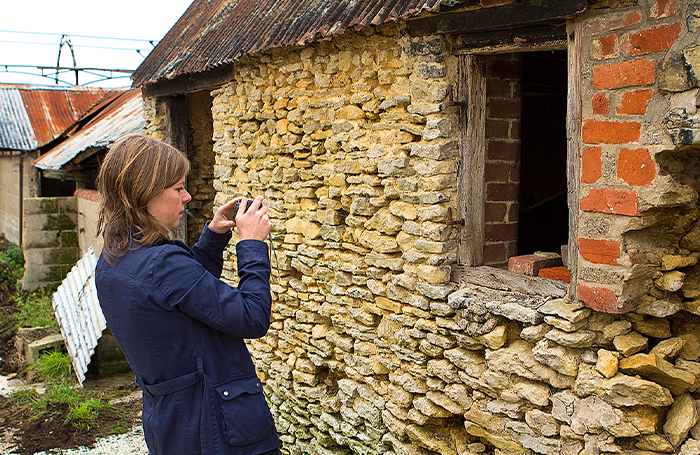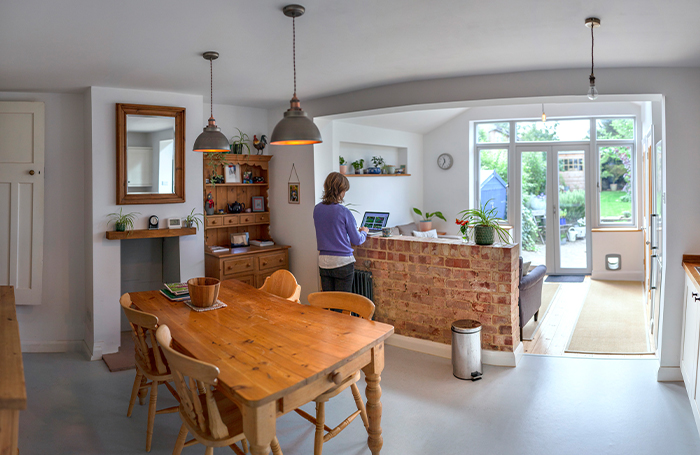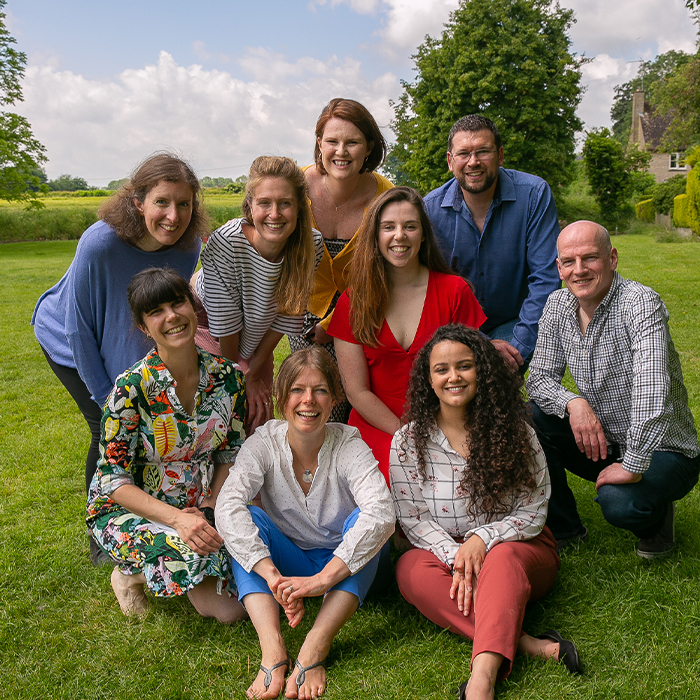For many professionals, the decision to become a parent or take on caring responsibilities can often feel like it will be detrimental to one’s career, especially for women. Making adjustments within your architecture practice can help mitigate the big question: Can I do both and be good at it?
While the answer to this question will vary by individual, a supportive workplace culture can help remove some of the barriers that impact this decision. Once barriers have been addressed, there’s more room to take advantage of the unique skills that parents and carers often possess.
Clare Nash is the founder and director of Clare Nash Architects (CNA), based in Oxfordshire, with 13 years of experience in vernacular architecture and eco-design. As the practice director and parent, she understands the importance of creating a workplace culture where these special skills can thrive.

“Motherhood expands your abilities and your efficiency. There is simply no time for it to be any other way. These are useful skills to have in any workplace but particularly in architecture, where good project management and time-efficient delivery on, commonly, low fees are important.”
Flexible working
For those juggling home responsibilities, the COVID-19 pandemic showed that the impossible is possible when it comes to making flexible working a reality. Flexible working is an easy way to allow colleagues to fit their weekly working hours around school/nursery drop-offs or being able to take children to a dentist appointment without having to use annual leave.
The trust afforded to colleagues to make up their allotted work hours not only creates a better work-life balance but also increases the diversity of your workforce. When those who traditionally would not have been able to fit the role around their home life can now work in ‘traditional’ professional roles, there is a visible increase in experiences and ideas coming to the table.
This is also the case for others in your practice who may have been previously limited in their career progression because of commitments outside of the office that don’t fit into rigid work schedules; colleagues with chronic illness who have frequent hospital visits are just one example.
Some options for flexible working patterns that help parents/carers and other colleagues might include:
- Flexible hours: this could include working an earlier day of 8am to 4pm to accommodate an afternoon school run
- Hybrid working: working some days from home and others in the office for group meetings, and similar.
- Part-time working: some parents may choose to alternate days working to reduce the costs of childcare and nursery
- Job-sharing: splitting a full-time role across two part-time employees to accommodate their working capacity
- Condensed working: operating a four-day work week
- Remote working: from home or a secure co-working space

Remote working
For those whose lifestyle better suits remote working, it is a benefit that can help practices retain flexible and high-trust employees. “Sticking to a rigid rule that everyone needs to be in the office often excludes clever, experienced architects from working at your practice. Think about the message it gives an employee. It might not be intentional, but it comes across as ‘we don’t trust you enough to work from home’. Is that a nice message to send?”
Across the built environment, there is a workplace culture shift happening. Younger people expect more from their employers and seek out roles that give them a better work-life balance. In a world where both parents are increasingly likely to work at least part-time, remote working can provide a much-needed reprieve for those looking to cover the additional financial costs of being a parent or carer while being close to home. It is important to note that working remotely is not always a suitable arrangement for all colleagues, but can still be a viable option for many.
Sticking to rigid schedules can exclude many colleagues, including parents/carers and may dissuade them from working in your practice or being able to progress their careers. This means they may be forced to leave their role or the profession altogether. With women taking on a disproportionately higher role as caretakers, there are already visible impacts on the number of women who can progress in the sector.

Working culture and boundaries
The romanticised stereotype of the young architect working late into the night, fuelled entirely by coffee, as a symbol of ‘peak performance’ is no longer considered the ideal for most people in the profession. Unless one is a natural late-night worker, this approach can often result in burnout, social isolation, and serious mental health concerns.
As a profession, we are seeing a shift to ending unpaid overtime as “the only way to balance the books”. Setting clear boundaries, especially as a practice leader, is an ideal way to show your colleagues that you do care for their wellbeing and a healthy work-life balance is valued to promote productivity.
“I have always been a ‘pro-life’ architect, believing that my life outside of architecture brought useful ideas and energy to my work, not least the mental health benefits.”
For parents and carers, especially, being able to set clear workplace boundaries is key for being a valued colleague, but also knowing one’s role isn’t going to be jeopardised by speaking out. By being able to clock off on time, colleagues will be more likely to come in ready to start the day well-rested and in a creative mindset.
Here are some areas where boundaries can be established in practice:
- Try to avoid sending or checking emails outside of working hours – most problems will not be solved when others are away from their desk too
- Approach periods of exercise, time off and lunch breaks as essential for productivity and creativity, not as things to squeeze in ‘if there is time’
- Develop task lists at the end of your day for the following day – this will help train your brain not to think about work tasks outside of work hours
This list is not exhaustive, and each family dynamic will bring its own set of challenges to developing a healthy work-life balance. But, by embracing these changes within your practice and setting examples as a workplace cultural leader, you can make the profession a more attractive place for parents and carers looking to do both. In the long term, this will enhance the dynamics of your workplace and generate diverse and inclusive ideas.

About Inclusion Emergency
Curated within the book is a broad collection of stories and insights from thought leaders in architecture at all stages of their careers across the UK who share a vision of addressing the need for inclusion. Presented as a medley of formats and ways of expressing lived experience, this content has been made accessible to a wider audience. Whether it’s to find an understanding of the issues or tools to mitigate, build confidence and find support, each chapter includes additional resources to take your learning even further.
Inclusion Emergency is now available from RIBA Books.
Additional resources
Explore our further resources on supporting colleagues in the workplace, or view our other EDI (equity, diversity, and inclusion) guidance.









